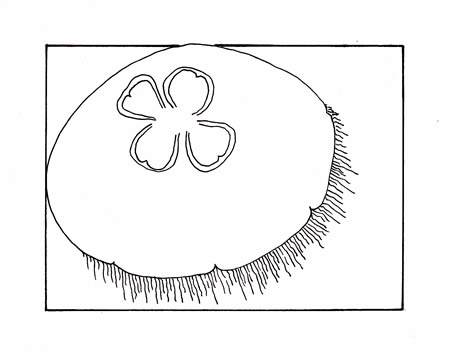Over the Moon Jellies

As the temperature of our ocean waters keep warming up, the moon jellies will start appearing. Having existed over 600 million years, all jellies are considered living fossils. As cnidarians, they are primitive creatures without a brain or central nervous system, but use their nerve net to respond to light, odor and other limited stimuli. The oceans off Laguna Beach contain two very similar species of moon jellies that are very difficult to distinguish between; the Aurelia labiate, found in the Pacific Ocean from Alaska to San Diego, and the Aurelia aurita, which has a worldwide distribution. Only DNA analysis can distinguish between the two.

The moon jelly is radially symmetrical, dome shaped and ranges from two to 15 inches in diameter. It has a short fringe (cilia) hanging from the perimeter of its bell and four oral arms, which are longer lobe-like tentacles extending from around the mouth in the center of the underside of the bell. Translucent and milky in color, the moon jelly has four horseshoe shaped reproductive organs grouped around the center of the bell. It is thought that the crescent shaped organs are pinkish in females, yellowish in males and whitish in juveniles. Moon jellies are either male or female and reproduce both sexually and asexually. Adult males release sperm that the female uses to fertilize her eggs that then develop inside her body before being released into the water column as larvae. The larva transforms into a polyp upon attaching itself to a hard surface. Asexual reproduction occurs when a polyp creates clones that are also released into the water column before settling. Polyps mature in approximately three months when they develop into medusas. The average lifespan of the jelly once it reaches the medusa stage is one year.
Moon jellies drift on the ocean currents changing direction by pulsing their bells. They mostly tend to be found in shallow coastal waters near the surface where their food source is found in higher concentrations. Carnivores, the moon jelly feeds on zooplankton, larval crabs, copepods, shrimp, diatoms and fish eggs which are either stung by the nematocysts (stinging cells) on their tentacles and oral arms, or become entangled in mucus found on the surface of the animal before being deposited in the stomach. Luckily, given the quantity of moon jellies that can occasionally congregate in Laguna’s waters, the nematocysts found on the moon jelly do not penetrate human skin so although one can develop a rash from contact, one does not get stung like with other species of jellies. Predators of the moon jelly include mola’s (ocean sunfish) sea turtles, a few other jelly species, fish and on occasion, shore birds.
Mia Davidson and artist Jan Sattler are residents of Laguna Beach, year-round ocean swimmers and are actively involved in a range of activities to protect the near-shore and marine environment.




